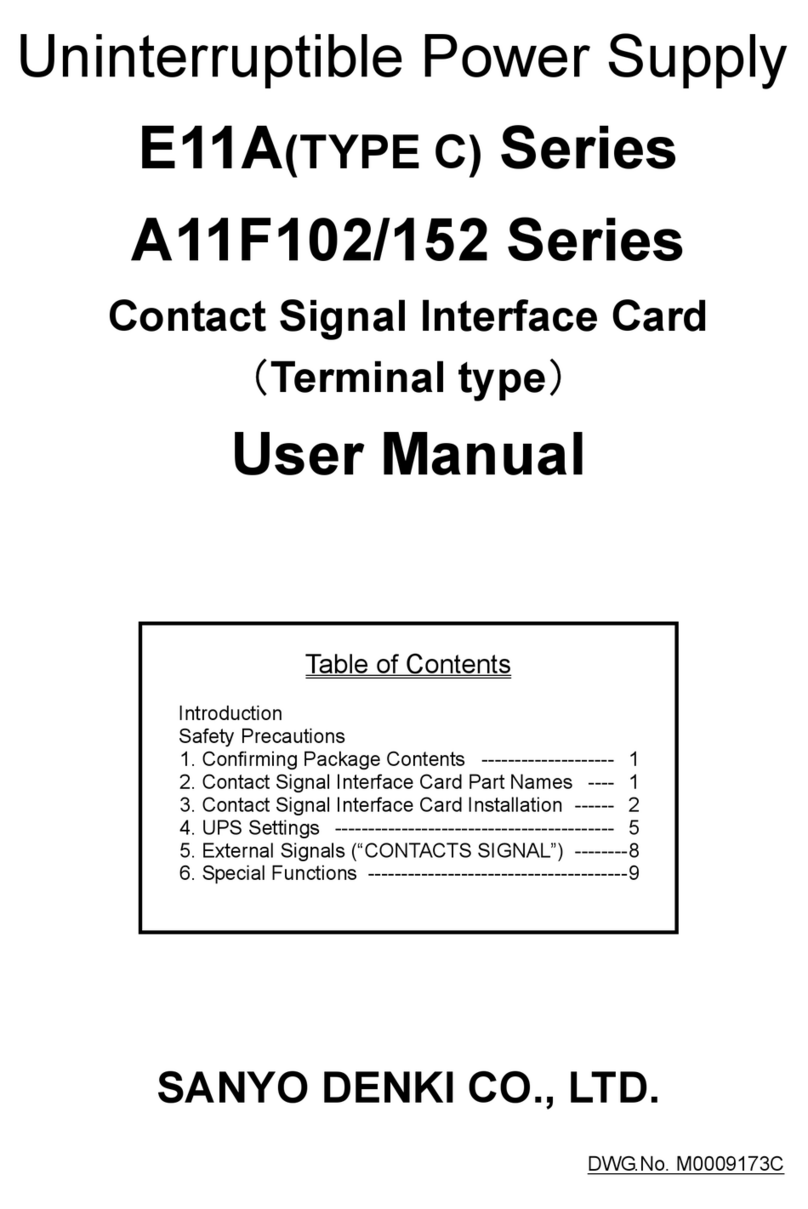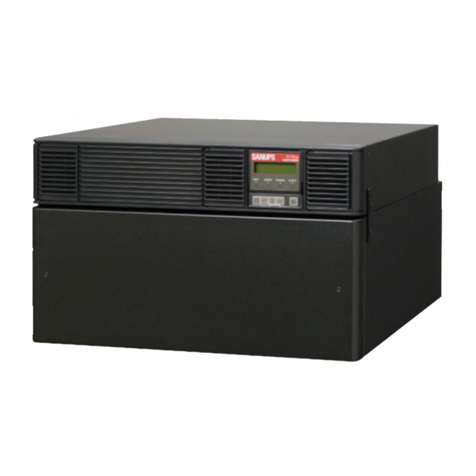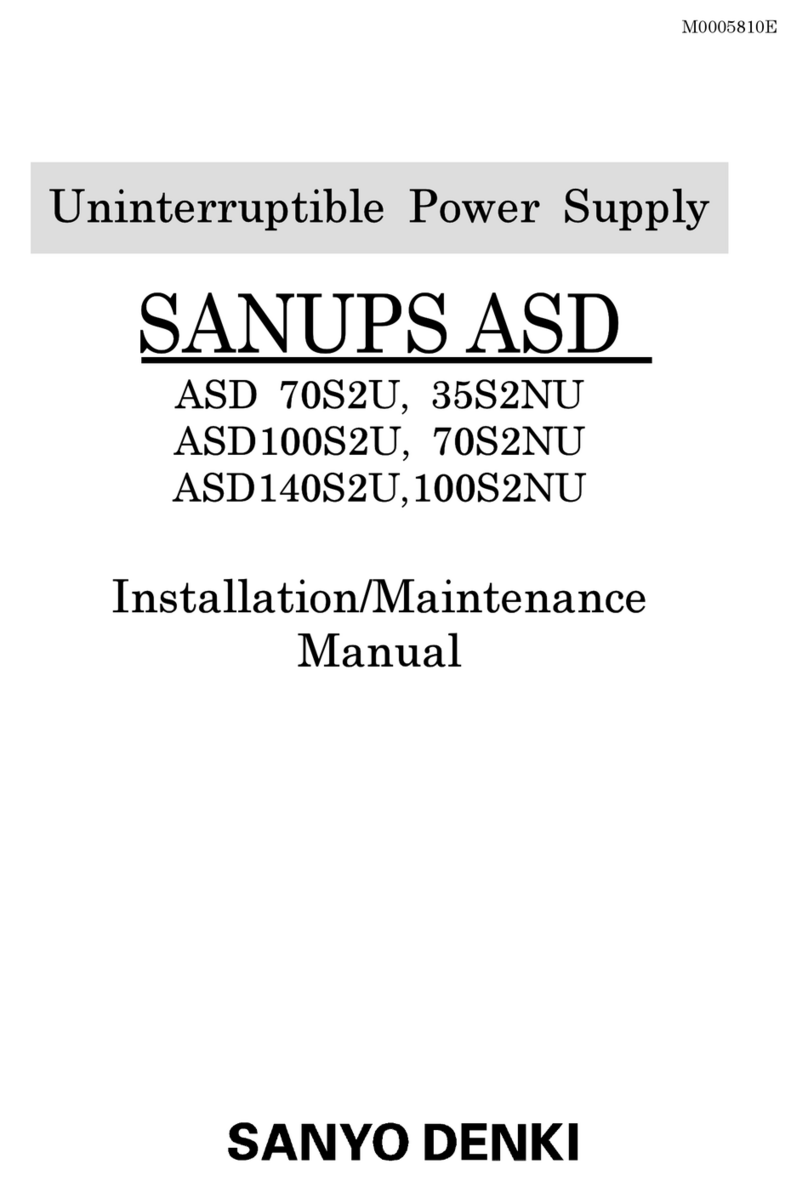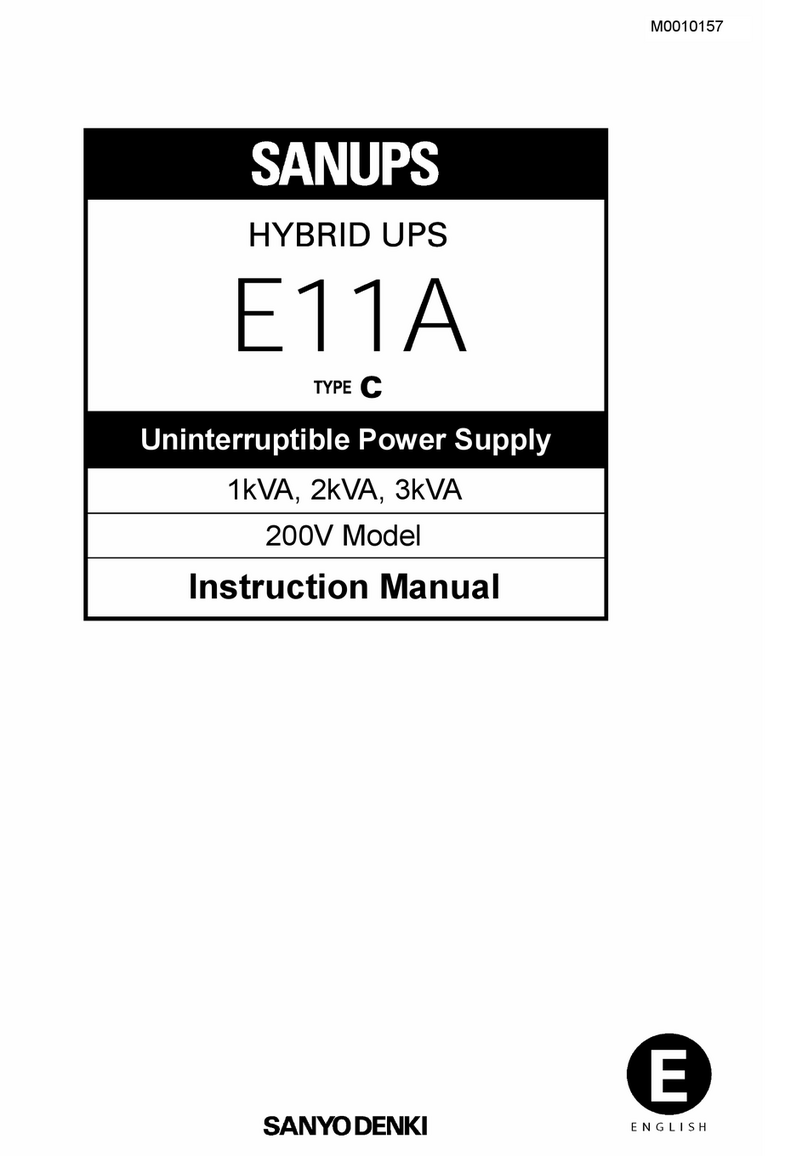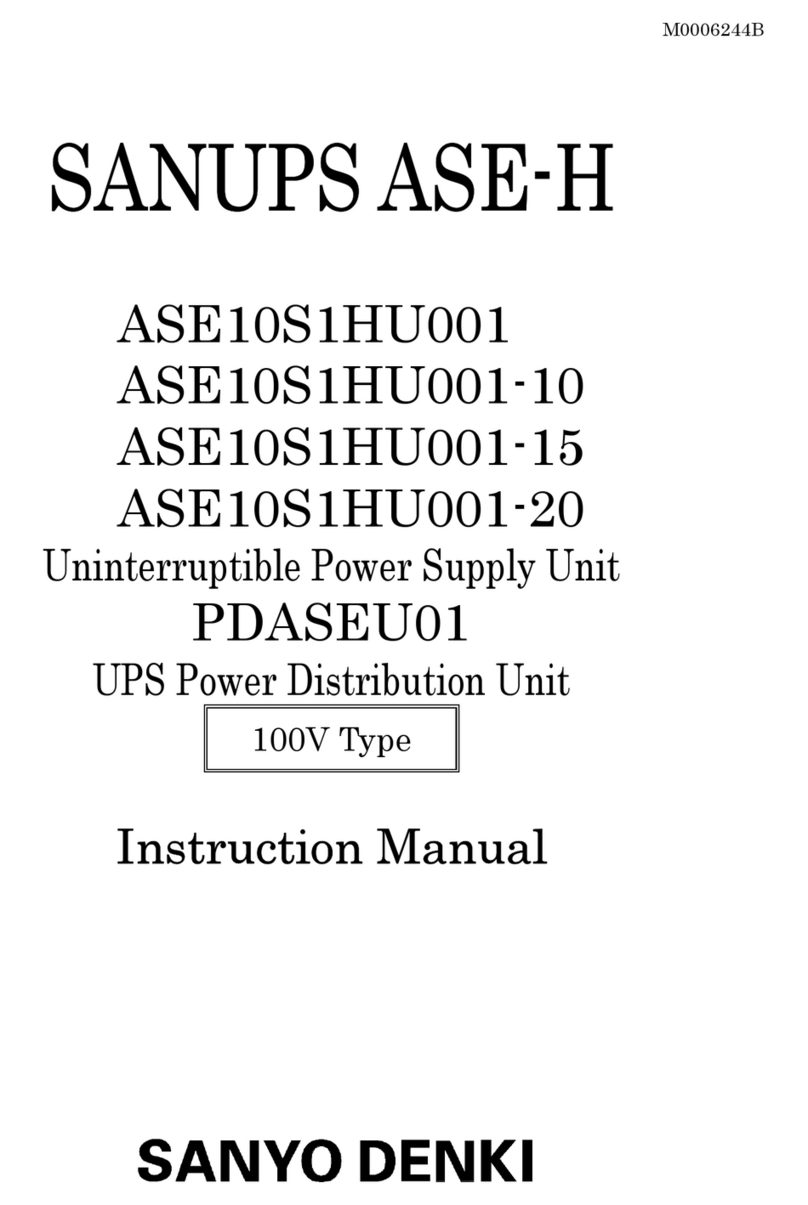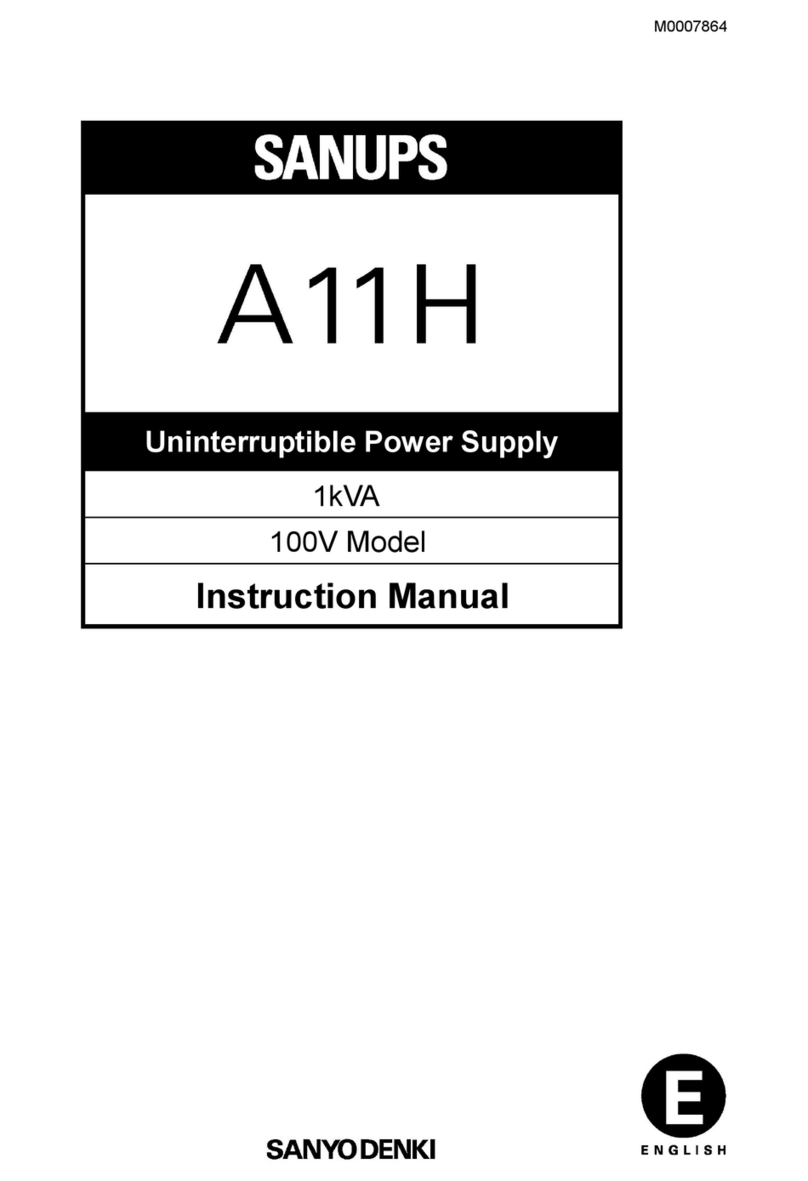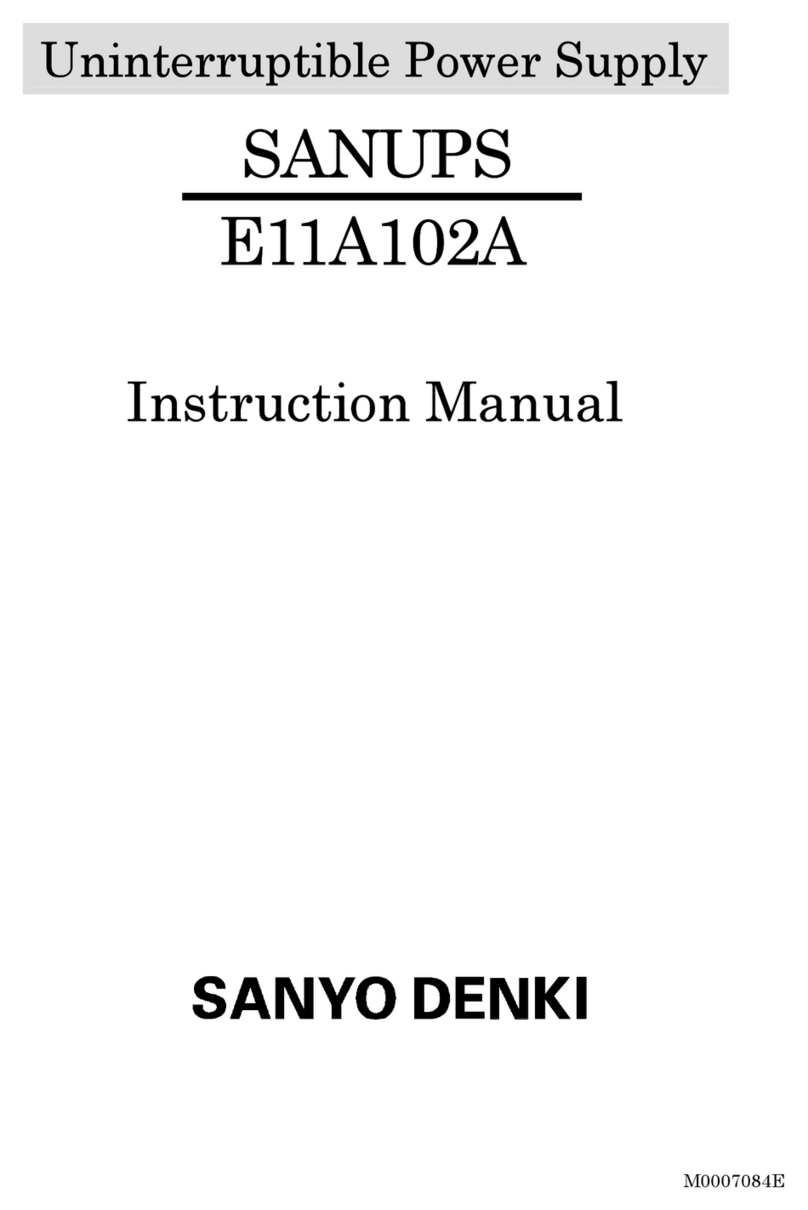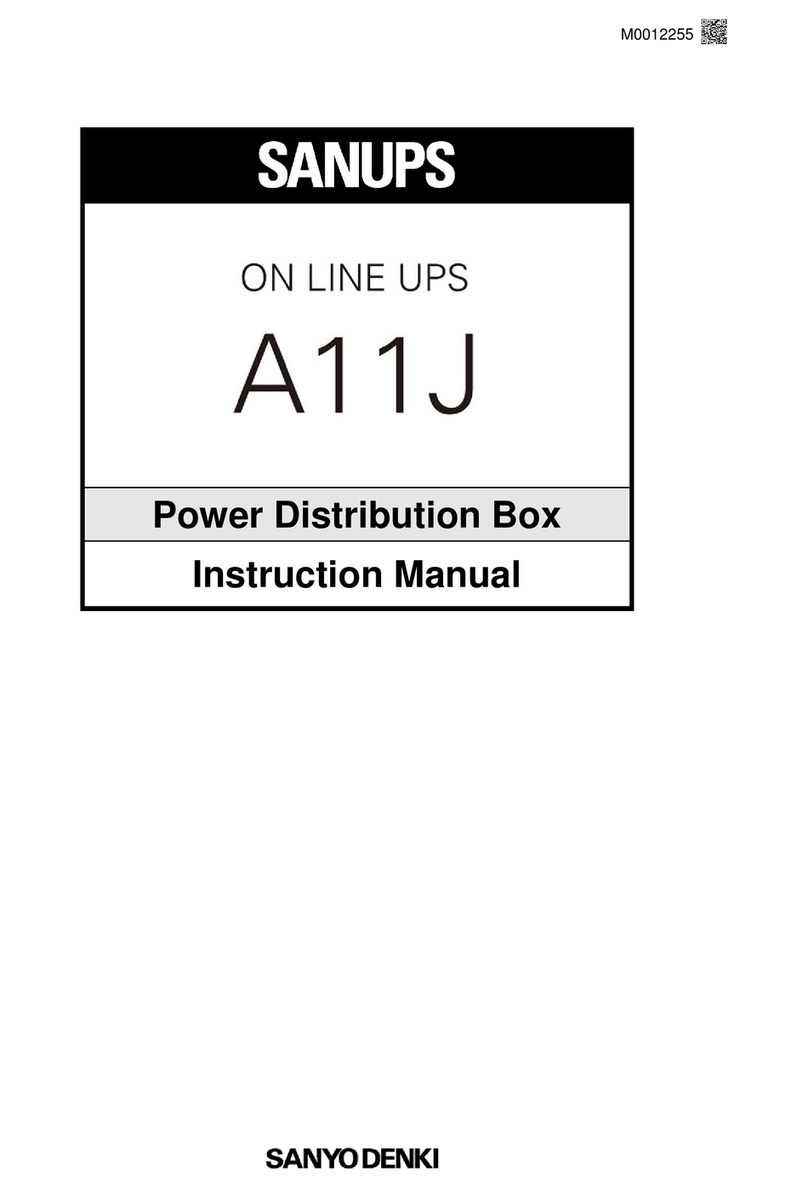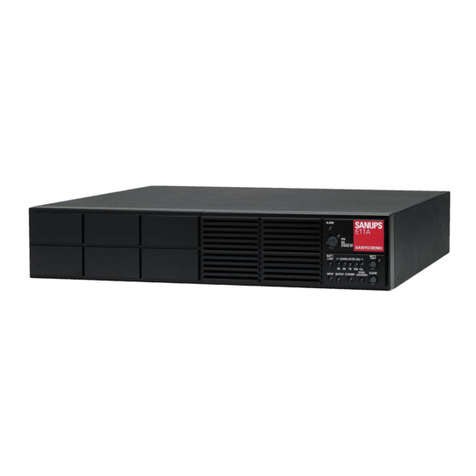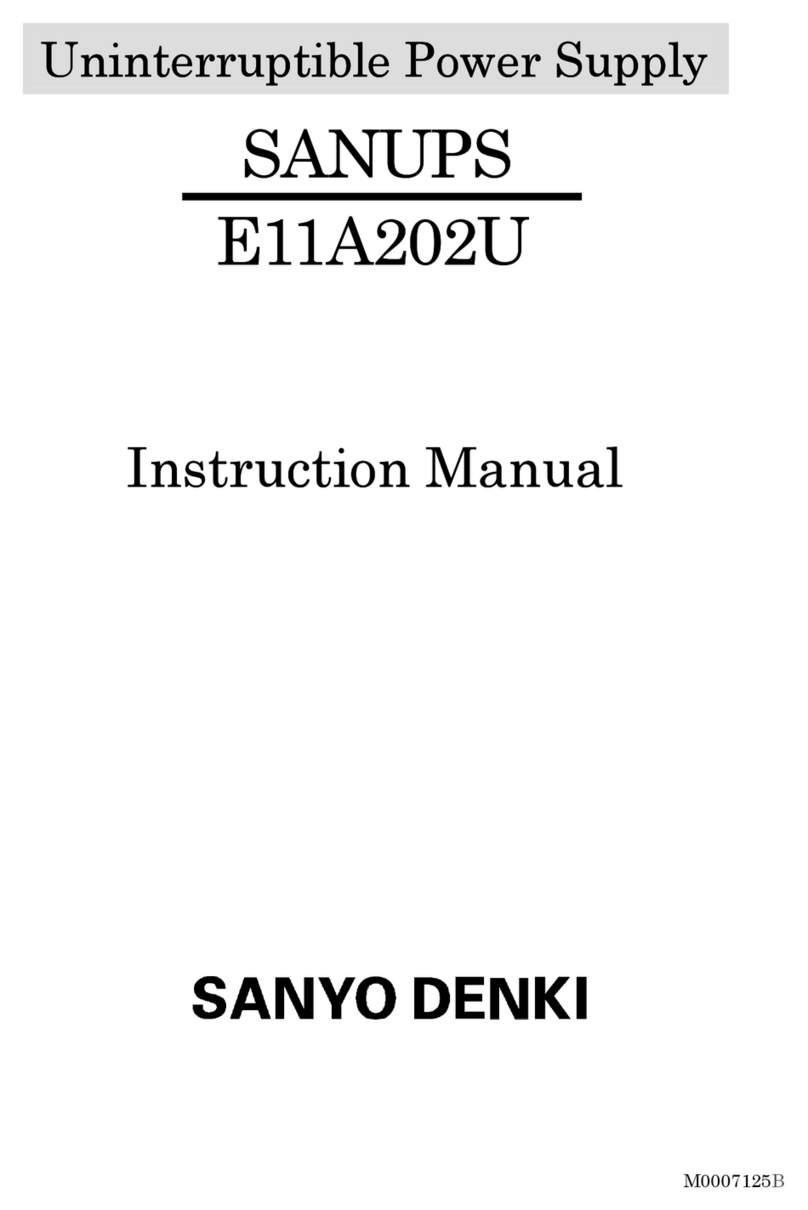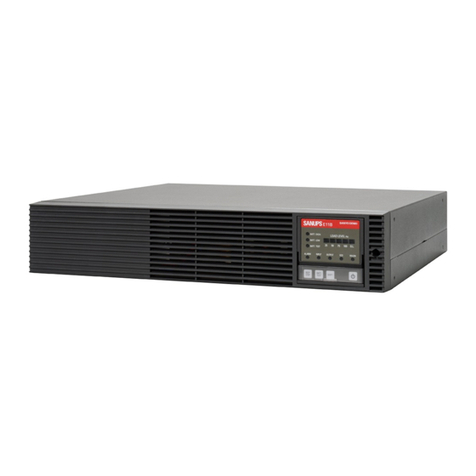
5
CATALOG No.P1050B004 ‘23.11
SANUPS E11B-Li
UL/CEcertified models
Specifications
200V model
Model no. E11BL102A002AUJ E11BL102A012AUJ E11BL202A002AUJ E11BL202A012AUJ
UL-registered no. E11BL102U002J E11BL102U012J E11BL202U002J E11BL202U012J
Rated output capacity (apparent power / active power) 1.0 kVA / 0.8 kW 2.0 kVA / 1.6 kW
Technology Topology Hybrid(1)
Cooling method Forced air cooling
AC input
No. of phases/wires Single-phase 2-wire(2)
Rated voltage (Same as output) 200/208/220/230/240 V
Voltage range In Double Conversion mode
At load level < 40%: 110 to 300 V
At load level < 70%: 136 to 288 V At load level < 70%: 136 to 280 V
At load level ≥ 70%: 160 to 288 V At load level ≥ 70%: 160 to 280 V
In Economy mode Within ±8% of rated voltage
Rated frequency 50/60 Hz (auto-sensing)
Frequency range(3)
In Double Conversion mode fixed setting Within ±1% of rated frequency (Synchronization range)
40 to 120 Hz (Asynchronous operation range)
In automatic transfer setting Within ±1, 3, or 5% of rated frequency (Factory setting is ±3%; synchronization range)
40 to 120 Hz (Asynchronous operation range)
Required capacity(4) 1.1 kVA or less 2.2 kVA or less
Input power factor 0.95 or greater
AC output
No. of phases/wires Single-phase 2-wire
Rated voltage (Changeable with settings) 200/208/220/230/240 V (Factory setting: 200 V)
Voltage regulation In Double Conversion mode Within ±2% of rated voltage
In Economy mode Within -10 to +8% of rated voltage
Rated frequency (same as input) 50/60 Hz
Frequency regulation
In grid
operation
In Double Conversion mode
fixed setting Within ±1% of rated frequency
In automatic transfer setting Within ±1, 3, or 5% of rated frequency (Factory setting: ±3%)
In battery operation Within ±0.5% of rated frequency (Including during asynchronous operation)
Voltage harmonic distortion
(At rated output)
At linear load 3% or less
At rectifier load 8% or less
Load power factor Rated 0.8 lagging (Variation range: 0.7 lagging to 1.0)
Transient voltage
fluctuation
For abrupt load change Within ±5% of rated voltage (For 0⇔100% load step changes at rated input)
For loss or return of input power Within ±5% of rated voltage (At rated output)
For abrupt input voltage change Within ±5% of rated voltage (For ±10% abrupt change)
Overcurrent protection Automatic transfer to bypass (With automatic retransfer function)
Overload capability Inverter In Double Conversion mode 105% (for 200 ms)
Bypass 200% (for 30 s), 800% (for 2 cycles)
Battery
Type Lithium-ion battery
Battery backup time(5) 4 min
Expected life (6) Approx. 10 years
Battery capacit 40 Ah·cell 80 Ah·cell
Battery self-test Can be enabled (Factory setting:disabled)
Interface
PC port RS-232C, USB Type B(7) (Cannot be used at the same time)
Remote port Remote ON/OFF
Dry contact Optional dry contact interface card is required
Network support Optional LAN interface card is required
Acoustic noise (In Double Conversion mode) 51 dB 55 dB
Heat dissipation
(In Double Conversion mode at rated output, after battery charging completed) 130 W 260 W
Input leakage current (Including during asynchronous operation) 3 mA or less 3.5 mA or less
Operating environment Ambient temperature: -10 to +55°C;(8) relative humidity: 20 to 90% (non-condensing)
Storage environment(9) Ambient temperature: -15 to +60°C; relative humidity: 20 to 90% (non-condensing)
Safety standard UL 1778 5th edition (E226092), CSA C22.2 No. 107.3-14 (3rd edition), CE marking (EN 62040-1:2008/A1:2013)
EMC standard
VCCI 32-1 Class A
FCC Part 15 Subpart B Class A, EN 62040-2 C2:2010,
EN 55022:2010 Class A, EN 62040-2:2006, EN 55024:2010
Separate options
Vertical stands STAND2UA00
Floor mounting brackets FM2UA00
Rack support rails(10) RM030-US (2U)
Air filter(11) FL011
(1) When the UPS transfers from Economy mode to battery operation, there will be an interruption of approximately
8 ms. In the event of an abrupt input voltage or frequency change while in Economy mode, the UPS might transfer
to battery operation. For use without interruption, fix the operation mode to Double Conversion mode.
(2) When grounding, connect the grounded phase of the AC input power to the UPS’s W (N) input terminal (S-phase).
(3) The inverter synchronizes with AC input and allows an uninterrupted transfer to bypass provided that the AC input
frequency is within a range of the rated frequency ±3% (1, 3, or 5% selectable).
(4) Max. capacity during battery recovery charging
(5) At 25°C ambient temperature and load power factor of 0.8, using new, fully charged batteries.
(6) At an operating temperature of 30°C.
(7) Use of USB interface requires driver installation.
(8) When the ambient temperature exceeds the specified range, battery charging will stop and a Device Error (minor
malfunction) alarm will be generated.
(9) Avoid use or storage in +30°C or higher temperatures for extended periods of time, or the battery’s life will be
shortened. When a UPS is stored without being operated for a long period, the batteries require recharging once
every six months.
(10) Used for mounting the UPS on a standard 19-inch rack.
(11) A front side air intake filter for preventing dust ingress.
E11BL102A002AUJ E11BL102A012AUJ E11BL202A002AUJ E11BL202A012AUJ
Rear view
Output outlet shape IEC60320-C13×6 IEC60320-C13×6 IEC60320-C13×6, IEC60320-C19×1
Power input cable
(1830 mm)
IEC60320-C13 IEC60320-C14
(1830 mm)
IEC60320-C13 NEMA L6-20P
(1800 mm)
IEC60320-C19 IEC60320-C20
(1800 mm)
IEC60320-C19 NEMA L6-20P
